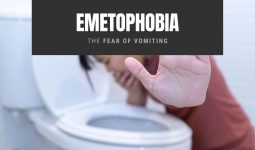Phobias generally have been one of the most paralyzing kinds of fears that a man can experience. One type of phobia that is commonly seen is the phobia called myrmecophobia.
Myrmecophobia can be defined as the intense fear of ants. It belongs to a general class of phobias known as Entomophobias (the intense fear of insects).
Myrmecophobia is a phobia derived from two Greek words; ‘Myrimex,’ which means ants, and Phobos, which means fear. Hence, Myrmecophobia can be defined as the irrational fear of ants.
People who have myrmecophobia may have had a traumatizing experience with ants before and find it difficult to go alone on road walks, trails or even step outside unfamiliar territories because they are intensely afraid of coming in contact with them.
Myrmecophobia is different from some other phobias, such as pupaphobia(the fear of puppets), sanguivoriphobia(the fear of vampires), and so on.
This is because, in the real sense, no actual dangers are found here. However, in myrmecophobia, which is the fear of ants, the patient’s fear is deeply rooted in the fact that ants can cause actual harm and injury to them, causing them to develop extreme anxiety towards ants.
One can somewhat understand a myrmecophobic’s fear in this instance as research has discovered that particular ant bites can be painful, while some can pose a real danger to the health of those affected.
For example, a particular type of ant, the red ants, and certain species, such as panaponera(also called bullet ants), have been particularly painful to an individual.
According to research conducted in 2010, the bite of the Bullet Ant, abundantly seen in certain cities such as Nicaragua and Honduras, is the most painful of all hymenopterans, such as ants, bees, wasps, etc.
In fact, according to this research, the pain from the bite of a bullet ant is comparable to the pain felt from a bullet wound, hence the name.
Although ant bites can be painful, it is extreme to say that they can lead to anaphylactic shock. It should be noted that not all ants are dangerous, and not all ant bites are harmful to the body.
A person bitten by an ant, whether a bullet ant or any other ant, is most likely to develop an actual fear of ants, also known as myrmecophobia.
Causes of Myrmecophobia
Like all phobias, the exact causes of Myrmecophobia are not known; however, the development of this phobia has been linked to two significant factors: Genetic and Environmental factors.
Genetic Factors
Research has shown over time that a person who has a family history of mental illnesses such as schizophrenia or anxiety disorder may most likely develop anxiety disorders, including myrmecophobia.
In other words, if a person has any family member who has suffered from any mental or anxiety disorder, there is a higher risk the patient may develop an anxiety disorder.
However, it is essential to note that even though a family member suffered from a particular anxiety disorder, for example, schizophrenia, another family member may not necessarily develop that certain anxiety or mental disorder.
Hence, if you have a family member (e.g., a parent) who developed an anxiety disorder such as thanatophobia(fear of death), then you have a higher tendency to develop any mental or anxiety disorder, including myrmecophobia.
However, although a person may have a genetic predisposition to develop an anxiety disorder, the person may not exhibit any symptoms until there is a trigger.
Environmental Factors
Like other phobias and mental disorders, it is not enough for one to only be predisposed by genetics.
In other words, this means that a person predisposed to having certain anxiety disorders due to his or her genetic makeup may not necessarily end up experiencing symptoms throughout his/her lifetime. This is because the person didn’t experience any triggers.
For example, a predisposed person may not develop myrmecophobia because the individual hasn’t had any particularly scary events with ants.
One may even see the person strolling in the sand where ants would typically be and not having any care in the world because the individual hasn’t had any disconcerting environmental event that can trigger his/her Myrmecophobia.
However, once the individual experiences a scary event, he or she may become very wary of ants and develop Myrmecophobia.
Most times, individuals who go on to develop Myrmecophobia may have had a traumatizing event as a young child where hundreds of ants bit him or her at once.
Then, when he or she sees ants, they keep on reliving that painful experience.
In some rare cases, an individual may develop Myrmecophobia, not by having a particularly traumatizing event from ants but by continually hearing how dangerous ants are.
Vision and hearing are two powerful instruments that can be used to instill fear in the minds of children and even adults.
Some caregivers unknowingly may have instilled a deep sense of the fear of ants in the wards but continually mention how dangerous they are.
According to research, about 25% of children who see or repeatedly hear how dangerous ants are or can be have been seen to develop Myrmecophobia.
Symptoms of Myrmecophobia
People who suffer from Myrmecophobia make most of their life decisions(either big or small) based on their intense fear of ants.
Myremecophobics may decide not to live in rural areas where there is a large space of land. Instead, they can choose to live in the cities they know are properly occupied by people.
Suppose they have no choice but to live in rural areas, people who have myrmecophobia who go to great lengths to ensure that they apply pesticides on the areas closest to them.
For most Myrmecophobics, the sight of ants would cause them to have intense anxiety, and sometimes, it may grow to become a full-blown anxiety attack.
Most people suffering from Myrmecophobia develop both physiological symptoms and physical symptoms.
According to research, most people who have Myrmecophobia tend to suffer from another anxiety disorder known as Obsessive-Compulsive Disorder (OCD). This is due to their obsessiveness about getting bitten by ants.
This obsession with ants causes them to develop severe mental stress and deep anguish, which eventually leads to them having a deep fear of ants.
A classical sign that one would often notice with Myrmecophobics is avoidance. Most myrmecophobias would rather avoid completely areas where ants may be present rather than having to deal with them.
People dealing with Myrmecophobia feel that having to deal with having to avoid it completely would give them a sense of relief from the intense anxiety they have to face when confronted with ants.
However, avoidance doesn’t bring any relief; rather, it gives the patient false hope that they will be fine if they keep avoiding.
In the long run, the patient tends to have the irrational belief that ants are things that are dreadful and should be feared and avoided altogether.
Reinforcing this belief causes the patient to feel that he or she needs no treatment, and eventually, the patient’s condition worsens.
Common physical symptoms of myrmecophobia include;
- Intense anxiety and fear when ants are seen
- Unusual concern about ants
- The uncontrollable use of pesticides
- Deep fear of being outside or in areas where ants may be seen
- The development of panic attacks occurs when ants are seen or spoken about.
Treatment of Myrmecophobia
Just like any other phobia, there is no particular treatment that can ultimately be used to cure myrmecophobia.
However, psychiatrists have been seen to use three distinct methods of treatment to help their patients deal with their symptoms.
Cognitive Behavioral Therapy (CBT)
Cognitive-behavioral therapy, also known as talk therapy, has been seen to be one of the very effective ways of treating many phobias, including myrmecophobia.
This treatment often includes the patient having to talk about his or her fears with a therapist.
In this form of therapy, the patient speaks with the therapist about why he or she is petrified of ants.
The therapist also tries to explain why the patient’s fear is irrational and why they have nothing to be scared of.
This talk therapy also includes numerous coping mechanisms the patient can apply whenever their fear of ants arises.
The therapist also tries to help them with coping skills that they can use whenever they have anxiety attacks as a result of their Myrmecophobia.
Exposure Therapy
Often, exposure therapy is done after the patient has completed talk therapy. In this treatment, the patient is exposed to his or her fears but in a controlled environment.
The therapist may begin by showing the patient pictures of ants and watching their reactions.
The therapist may also try to help the patient cope with panic attacks that may arise due to exposure to pictures of ants.
After the therapist sees that they have completed this stage, he or she gradually begins to expose them to videos of ants. This process is repeated until the patient no longer has to deal with myrmecophobia.
The Use of Medications
Your therapist can prescribe the use of certain medications, such as antidepressant drugs and some common anti-anxiety drugs, to help the patient cope with his anxiety symptoms.
However, it is essential to note that these medications do not necessarily treat myrmecophobia. Instead, these medications treat the symptoms of myrmecophobia but not the disorder.
It is also important to note that one must not use these drugs without the doctor’s prescription, as some types of medications, such as benzodiazepines, can become quite addictive.








